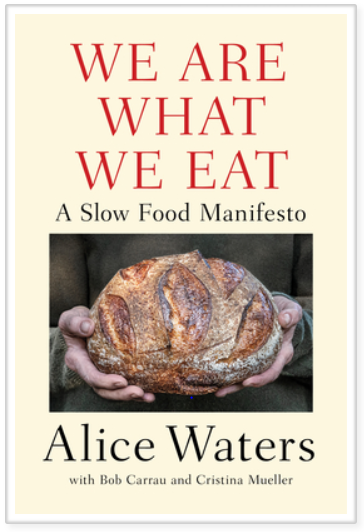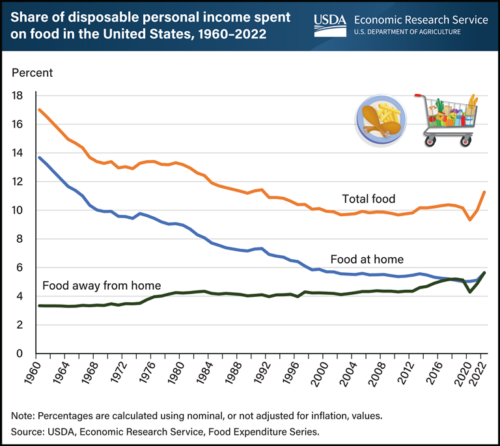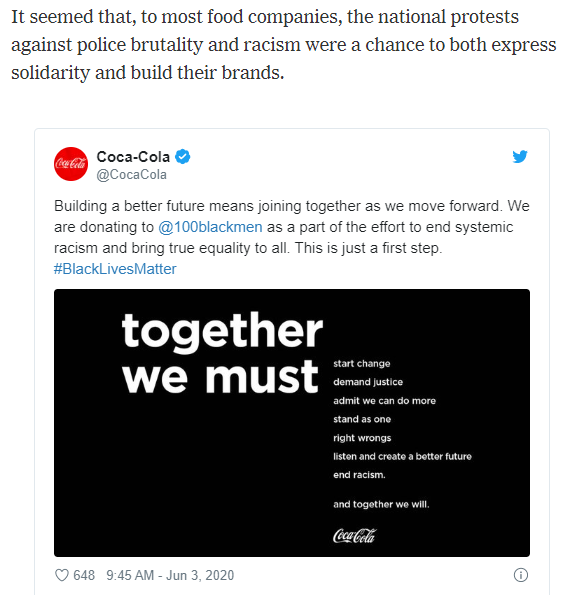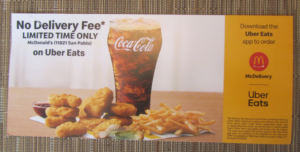Note to email recipients: I am still having technical difficulties with getting posts mailed out on a regular schedule. I meant this one to go out today, not yesterday. Apologies for the duplication.
______
Alice Waters with Bob Carrau and Cristina Mueller. We Are What We Eat: A Slow Food Manifesto. Penguin Press, 2021.

This book is about the harm caused by fast food culture, and why it needs to be replaced by slow food.
I particularly like the way this book is organized.
The first section has chapters about the characteristics of fast food culture that get us into trouble: convenience, uniformity, ubiquity, more is better, speed, cheapness.
Chapters in the second section explain why the values of slow food culture are so much better for us and the planet: beauty, biodiversity, seasonality, stewardship, simplicity, interconnectedness.
If you have been paying attention to food issues, none of this will be new. But it is well said, and from the heart.
It is also from Alice Waters’ experience running Chez Panisse for—can this be possible?—fifty years. Its anniversary is this year, and well worth celebrating.
The academic in me wishes this book had included references and an index, particularly because there were a few things I wanted to follow up on.
Otherwise, it’s a well written delight and people new to these issues will finding it eye-opening and convincing.
A sample from the chapter on convenience:
The fast food industry certainly wants us to believe that all the laborious work of cooking is drudgery—indeed, that cooking is just that, work—so they can sell us their labor-saving products. And they’ve been very successful at convincing us. We have become more and more impatient when we choose what to cook—we want it as easy and simple as it can possibly be, if we’re going to try to cook something at all. To relieve of of the “work” of cooking, enterprising companies have produced countless gadgets and packaged foods over the past sixty years to streamline the process of cooking at home. When I was growing up in New Jersey in the 1950s, we didn’t have too many labor-saving “convenience” appliances, except the electric blender we used for making banana milkshakes. But there were definitely convenience foods in our house: Jell-O, Junket, frozen fish sticks. And my mother absolutely used them for convenience’s sake; she had six people to cook for, and she was pretty overwhelmed with the washing the drying, the ironing, the housecleaning. Crucially, she had never learned how to cook when she was young. (p. 19-20)
From the simplicity chapter:
I use the phrase “less is more” all the time. I don’t like to be served more than I can eat, and when I’m at Chez Panisse I often ask for half-size portions because I don’t want to waste food. At the Edible Schoolyard, we do serve dishes family style, but our objective is to teach students a lesson in portion size and consideration for others. That one bowl has to be enough to feed the whole table. When students serve themselves from the bowl, it is also a lesson in conservation; they are learning that resources are not unlimited, and it helps them appreciate what is on their plate. I’m sure they take that lesson home with them. (p. 168)








